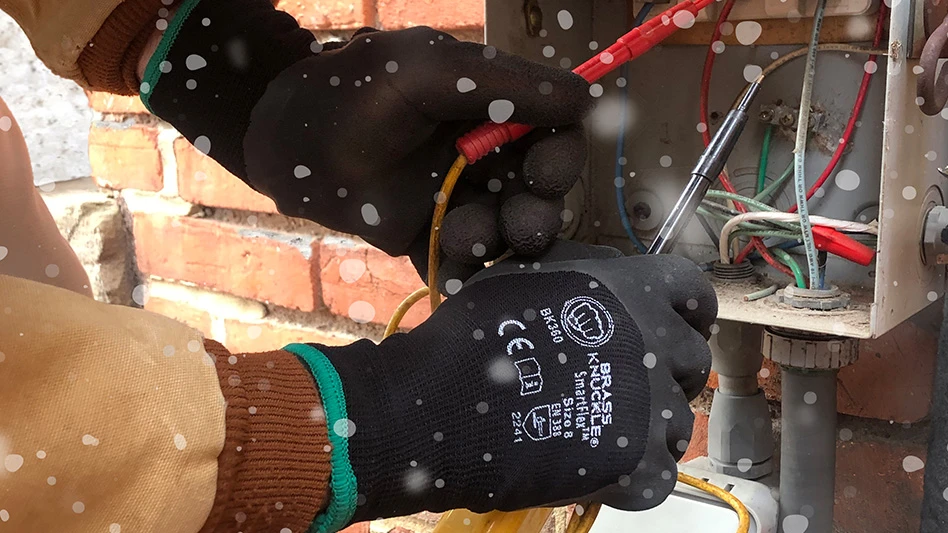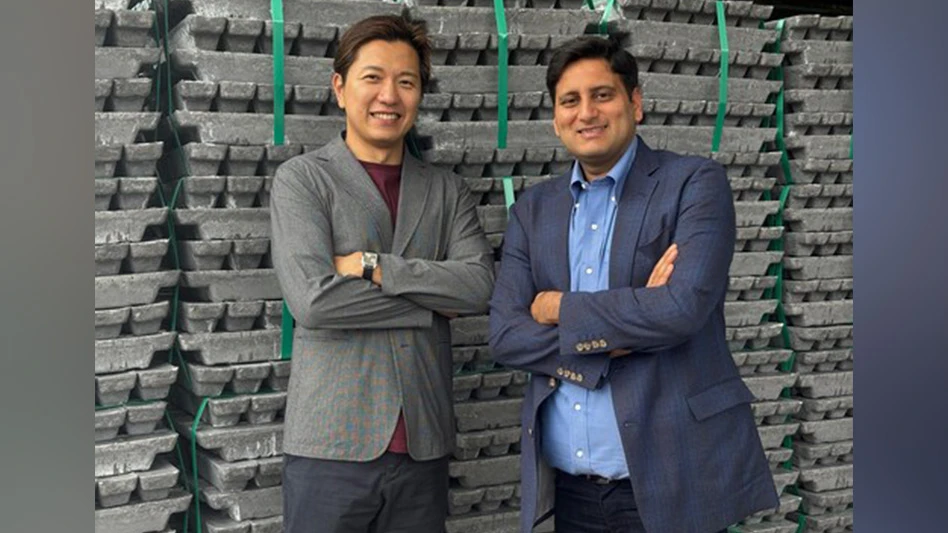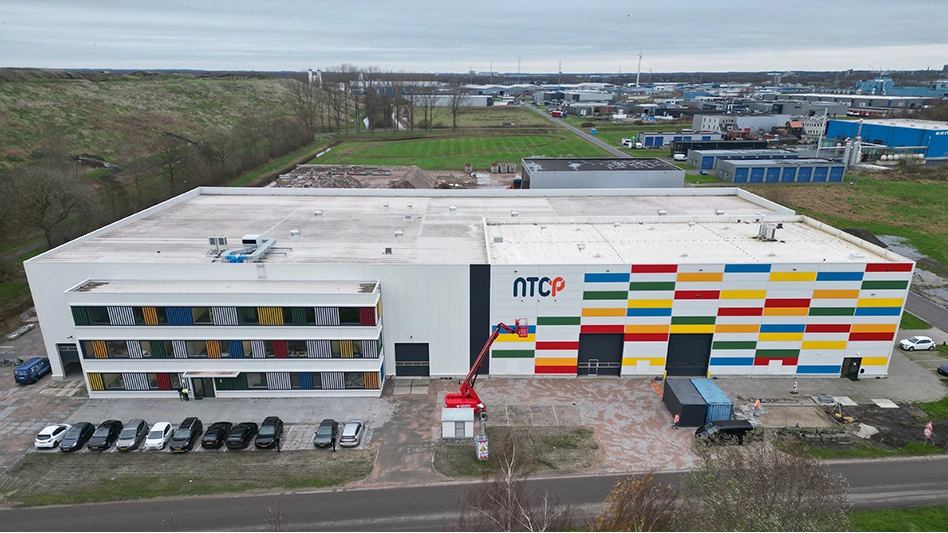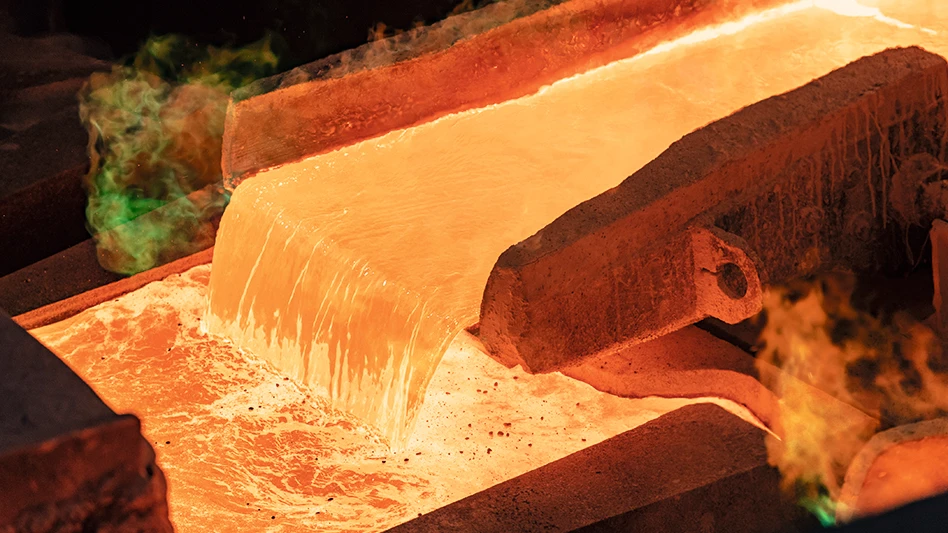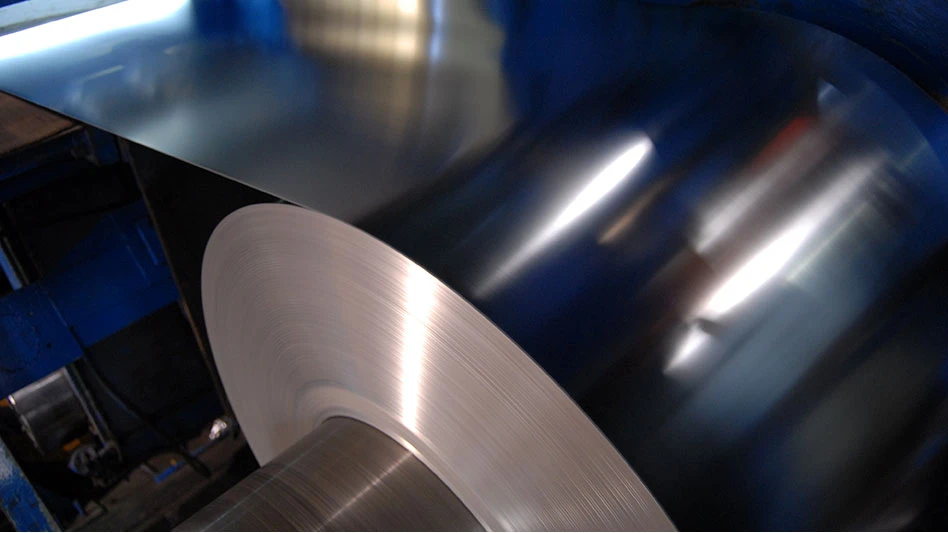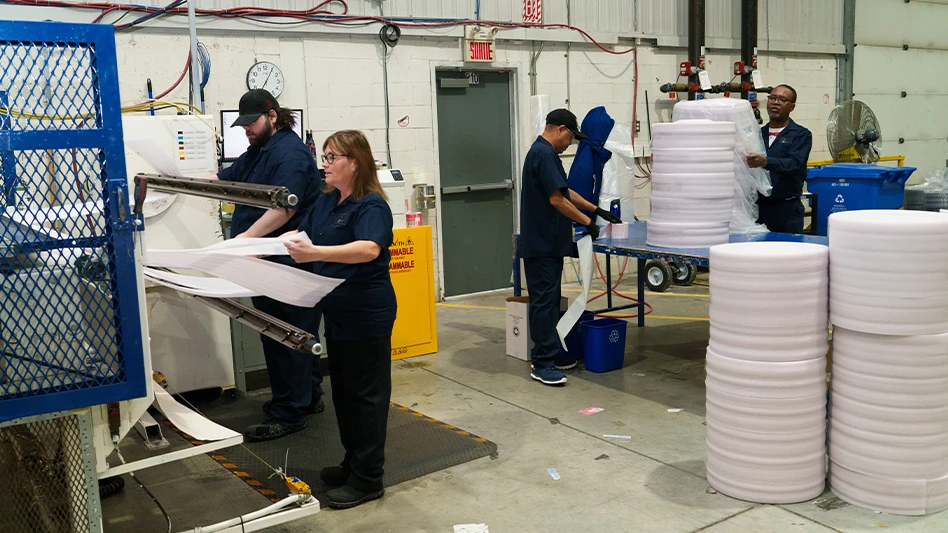
DS Smith has been a leader in sustainable and circular packaging solutions for many years, and the London-based paper and packaging company, acquired by Memphis, Tennessee-based International Paper earlier this year, recently was recognized for its hiring practices, proving its innovation goes beyond products.
The company first entered the North American market in 2017 with its acquisition of Interstate Resources Group, then based in Arlington, Virginia, and subsequent acquisitions of Corrugated Container Corp. and The Display Connection.
In 2019, DS Smith opened its packaging manufacturing facility in Lebanon, Indiana—its first greenfield facility in the U.S. The site is approximately 550,000 square feet and includes a rolled paper warehouse, a two-story corporate office as well as a client product design center and “advanced, fully automated equipment and machinery.” When it opened, DS Smith reported that the facility could produce 30,000 boxes per hour.
The site also features a DS Smith PackRight Center, which the company describes as a “collaborative packaging innovation hub.” Customers can attend workshops at the PackRight Center and work with DS Smith design engineers to maximize the sustainability of their packaging and “seize new opportunities for growth and innovation.”
Those opportunities for growth and innovation, however, are not just limited to sustainable packaging.
With workforce challenges being felt across the U.S., DS Smith developed a Spanish-language interpreters program at its Lebanon facility to find potential employees it otherwise might not have reached.
In November 2024, the program was recognized with a Better Practices, Better Planet 2030 Sustainability Award from the Washington-based American Forest & Paper Association (AF&PA), an award that honors outstanding sustainability programs and initiatives within the paper and wood products manufacturing industry.
The AF&PA chose DS Smith’s Spanish-language interpreters program for its “innovative approach” to diversity, equity and inclusion, or DE&I, specifically addressing language barriers and expanding employment opportunities for Spanish-speaking workers.
“We’re trying to do everything bilingual so that inclusivity is felt in the organization,” DS Smith Chief Human Resources Officer Monica Anderton tells Recycling Today.
“We have a saying that we aspire to be an equity-minded employer. We’ve put a lot of effort into inclusion training and DE&I culture toolkits. … We recognize that not everybody starts from the same place, and we try to meet people where they’re at.”
A new approach to recruitment

According to the most recent census data, Lebanon residents of Hispanic or Latino origin make up nearly 8 percent of the population, the second-largest demographic behind white residents.
“Post-COVID, the hiring market has been a real challenge,” Anderton says, noting that when fully staffed, the Lebanon facility has about 260 employees. “In Lebanon … we’re in a very tight, dense manufacturing park—there’s a lot of competition. We had issues trying to get staffed up. We couldn’t get our second or our third shift staffed, and we were really struggling.”
She says the company tried “all kinds of crazy things” to attract employees—job fairs with a DJ, leaving flyers at churches and restaurants, competitions, referral bonuses and billboards.
That’s when Becky Gordon, HR manager at the Lebanon facility, decided to try a different approach.
“How were we going to come at this recruiting in a different way?” Anderton asks. “We had tried a lot of different things, but we weren’t having any luck. … Becky saw this opportunity to build a relationship with a Spanish-speaking temp agency.”
The agency informed Gordon it could provide candidates for employment, but most of them did not speak English.
Anderton and Gordon agreed to give it a try but first had to consider how to keep the environment safe for everyone, no matter their native languages.
They started with just a few candidates as a test run. At the time, Anderton says several bilingual employees already were working at the facility, and the test run seemed to run smoothly. The next task, however, was to bring in a larger pool of candidates to see if the program was feasible on a larger scale.
“We really saw this as a pivot point,” Anderton says. “How do we migrate these couple people into a bigger population, and can we get enough people so we can have a second and third shift?”
Gordon then asked about hiring three interpreters—one for each shift—and decided to hire more non-English-speaking job candidates and build a program around taking care of them.
“That was the genesis of the program that really helped us shift our diversity numbers at the plant and diversify our candidate pool, and it’s had a huge impact on both,” Anderton says.
Because DS Smith’s Lebanon facility is a greenfield site, Anderton says the hardest positions to fill were the entry-level, hourly positions because they “were basically pulling people in.”

The site’s Spanish-language interpreters primarily function as such. According to Anderton, the interpreters assist Gordon with all the interviews as well as help develop and train employees on policies and procedures. She says they also have a good understanding of how the equipment works in different areas of the plant to ensure proper training.
“We have every bit of collateral in our plant now in English and Spanish, so every lockout tag and most policies and procedures,” Anderton says. “If you go to a piece of equipment, you’ll see a stand and it’ll be in English and Spanish. That is where we use the interpreters, from the onboarding to make sure it’s a good culture fit, to training on Day 1 or if they’ve been there a while and have benefits issues or other questions.”
Each monthly team meeting also now is done in English and Spanish, with two visual decks displayed at the same time, and all internal communications are offered in each language, too.
By implementing this program, Anderton says the site has been able to attract and hire skilled workers who previously might never have applied because of the language barrier. In two years, the Lebanon facility has increased its Hispanic employee demographic from 6 percent in 2022 to 42 percent in 2024.
“That’s been a really nice outcome,” she says. “We’ve seen some [employees] move into team-lead roles; we’ve seen promotion and progression absolutely happen.
“[We’ve found employees] that may have experience in maintenance or electrical that we wouldn’t have known had we not got them in the door.”
Anderton says safety is of critical importance, and the biggest risk lies in the fact that employees all “have to be able to safely come in, conduct their job and talk to people if they need help.”
“It’s manufacturing; there are a million moving pieces,” she says. “You can’t engineer all that. … That’s why the criticalness of the interpreters makes it work for us because we have that ability to speak freely and impart data and training and whatever we need to do with our employees.
“The core foundation of our culture, of how we do business, of how we treat people, that foundation is there and it’s very strong, but we’ve just expanded it now.”
The way forward
According to Anderton, it’s estimated approximately 3.8 million manufacturing jobs will be needed in the United States in the next decade, but 1.9 million are expected to remain unfilled.
“We have a huge gap in open jobs versus available candidates,” she says.
Language interpretation programs “absolutely can be an avenue” to addressing these employment gaps, but the trick, according to Anderton, is examining the demographics on a location-by-location basis.
“We have a candidate pool in Indiana that we’re able to tap, but I can’t say I have that same candidate pool near every plant I have,” she says. “So, it’s working in Lebanon because there’s this pool of candidates out there, and I think we just have to tailor our approach to what the demographic and what the available market is.”
The upfront cost of hiring interpreters could seem like a risk at first, but Anderton says a full house of well-taken care of employees is worth the price.
“I think it’s a perfect case study of investing a little money and seeing the results,” she says. “To me, it’s a cost-benefits analysis. The cost was three [interpreters and] the benefit is the plant is fully staffed. We’re meeting the cost, we’re meeting customer demand and we’re being responsive to what our customers are asking from us.
“It’s about fostering in a culture where you can value innovative ideas, give it a try and you’ll either fail fast or be off and running.”

Explore the April 2025 Issue
Check out more from this issue and find your next story to read.
Latest from Recycling Today
- Nucor names new president
- DOE rare earths funding is open to recyclers
- Design for Recycling Resolution introduced
- PetStar PET recycling plant expands
- Iron Bull addresses scrap handling needs with custom hoppers
- REgroup, CP Group to build advanced MRF in Nova Scotia
- Oregon county expands options for hard-to-recycling items
- Flexible plastic packaging initiative launches in Canada
